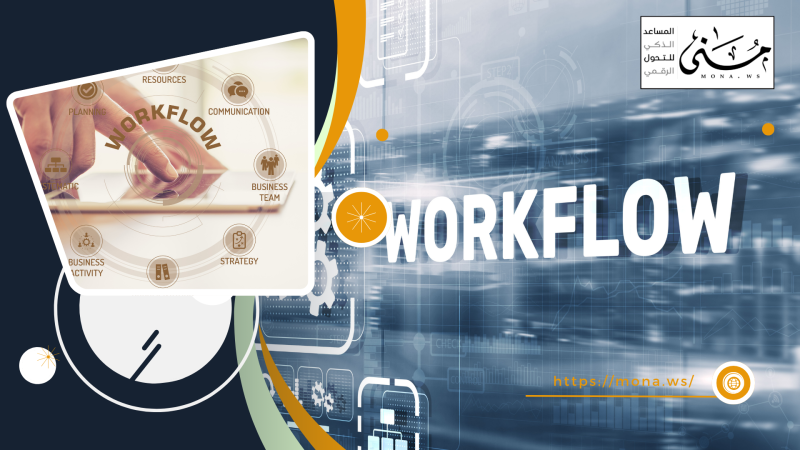Governance is no longer just a management term; it has become a cornerstone for ensuring organizational sustainability and transparency. Achieving effective governance requires seamless integration between all daily operations—foremost among them: document management and archiving.
So how can Enterprise Content Management (ECM) systems be a central tool for realizing this governance by integrating archiving with policies and procedures? That’s exactly what this case study reveals—how one commercial company started by using DocSuite ECM to fulfill archiving needs, then expanded its use to manage internal policies and procedures, achieving data-driven governance in the process.
The Initial Challenge: The Need for an Efficient Archiving System
Before adopting DocSuite ECM, our company faced significant challenges in managing and archiving documents. Chaos dominated the offices—papers piled up, and critical information was easily lost. This disorganization slowed down workflows and exposed the company to regulatory compliance risks. Finding a single document could take hours of manual effort, with the added risk of permanently losing irreplaceable data.
To address this, the leadership made a strategic decision to implement DocSuite ECM as an effective starting point for tackling document archiving. The initial phase focused on using the system as the primary tool for digitizing, indexing, and systematically organizing physical and electronic documents. This shift brought about a dramatic improvement in document management efficiency and significantly reduced clutter.
Moving to Policy Management: A Deeper Vision of Governance
As archiving operations stabilized and showed tangible results, it became clear that archiving alone—while essential—was not enough to achieve comprehensive governance. Archived documents hold real value only when tightly integrated with the policies and procedures that govern their use.
This realization highlighted the need for structured policy and procedure management—not just to enforce them, but to drive consistent compliance across departments and promote transparency and accountability.
The pivotal step was expanding the use of DocSuite ECM to include comprehensive internal policy management. We recognized that DocSuite’s capabilities extended far beyond traditional archiving. These capabilities were leveraged to:
1. Centralize Policies
DocSuite ECM became a unified central repository for all internal policies and procedures—from HR policies to standard operating procedures (SOPs). This eliminated information silos and ensured that employees always had access to the latest approved guidelines in one easily accessible place.
2. Control Versions
One of the biggest challenges in policy management is version control. DocSuite ECM enforces strict version tracking, keeping detailed records of all edits and maintaining archives of previous versions. This prevents outdated or unauthorized versions from being used and ensures alignment with the latest legal and regulatory updates.
3. Manage Policy Lifecycle
Policies are no longer static documents. With DocSuite ECM, policies follow a complete lifecycle—from drafting to legal or financial department review, to formal approval by the appropriate authority, and finally to publication and internal dissemination. This end-to-end process ensures that each policy is thoroughly vetted before implementation.
4. Link Policies to Documents
This was the game-changer. Instead of archiving documents in isolation, each archived document was linked to relevant policies and procedures. For example, a supplier contract could be tied to procurement policies, or a financial report linked to internal accounting guidelines. This integration enhances compliance and provides contextual clarity for every document.
Achieving Data-Driven Governance and Administrative Compliance
DocSuite ECM has proven to be a vital and effective tool in advancing data-driven governance and administrative compliance across our organization. By offering an integrated platform for both archiving and managing policies and procedures, DocSuite transformed the way we work.
It has empowered us to make decisions based on accurate and reliable information, ensuring every step aligns with internal and external standards.
Key benefits included:
✅ Enhanced Transparency
Before DocSuite, policies and information were scattered, leading to confusion and inefficiency. Now, employees can access everything through a single platform, eliminating ambiguity and reinforcing a culture of accountability. Everyone knows what is expected and how to act appropriately in any given situation.
✅ Improved Compliance
DocSuite ECM plays a central role in ensuring full compliance—not only with internal policies but also with ever-evolving external regulations. It enables complete audit trails for every document or policy access, edit, and publication, which are essential during financial or legal audits.
✅ Simplified Auditing
Internal and external audits used to be resource-heavy and complex. Today, with centralized and well-documented policy and document management, audits are faster, easier, and more efficient. Auditors can quickly locate all the evidence they need with precision and speed.
✅ Reduced Risk
One of the most valuable outcomes of implementing DocSuite ECM is the mitigation of risk—particularly errors and non-compliance. Automation and standardization reduce dependence on manual processes, minimizing the chance of human error and the resulting legal or financial consequences. This also protects the company’s reputation.
For instance, in managing supplier contracts, every agreement is now linked to relevant legal and financial policies—such as payment terms, approval workflows, and contract conditions—ensuring full compliance from day one. Similarly, HR procedures (e.g., leave policies or hiring processes) are tracked and applied consistently across departments, promoting fairness and alignment.
Lessons Learned & Recommendations
Our experience was rich with lessons. Linking archiving and policy management through DocSuite ECM delivered immense value: improved operational efficiency, reduced errors, and stronger accountability. Of course, the journey came with its challenges—initial resistance to change, the need for staff training—but these were addressed through continuous awareness campaigns and technical support.
Based on our journey, here are a few recommendations for organizations seeking to follow a similar path:
-
Plan ahead: Clearly define the scope and objectives before implementing the system.
-
Invest in training: Ensure employees understand the system and its importance.
-
Start small: Begin with a pilot phase, then scale up gradually.
-
Maintain awareness: Reinforce the importance of governance and its integration into daily operations.
Final Thought: This Is More Than Just a Tech Upgrade
Our journey confirms that integrating archiving with governance policies through advanced ECM systems like DocSuite ECM is a strategic foundation for modern organizational success. This isn’t just a tech implementation—it’s a cultural shift that promotes transparency, operational excellence, and full compliance.
As digital governance evolves, systems like DocSuite will remain the central nervous system enabling businesses to make informed, data-driven decisions.
Are you ready to embrace technology for effective, data-driven governance in your organization?






Comments
Add New Comment